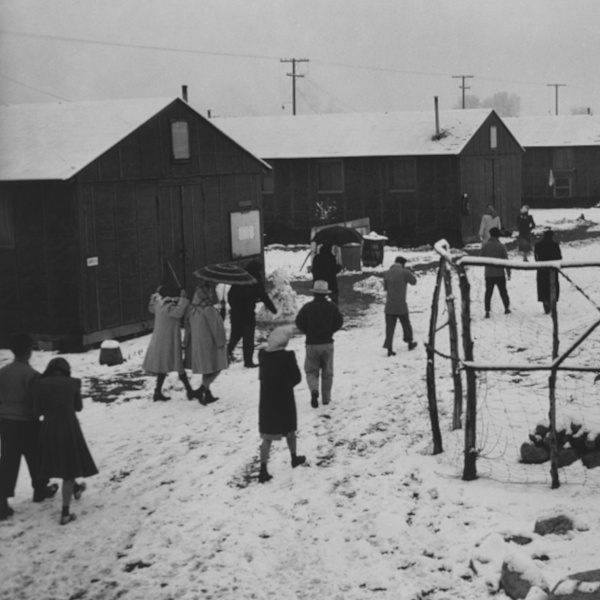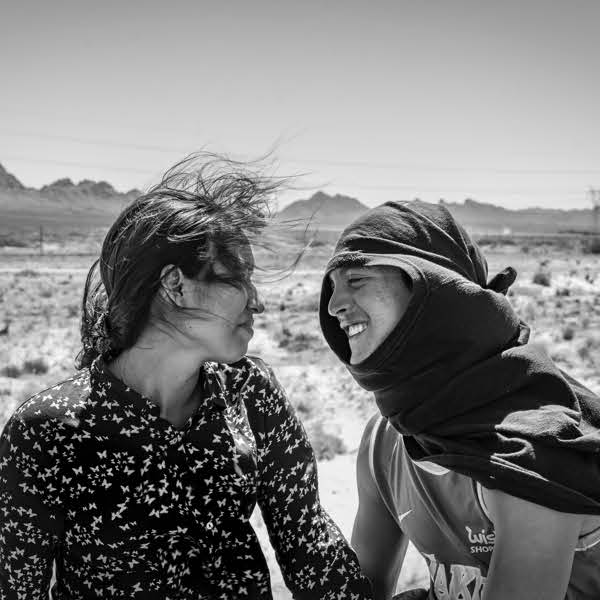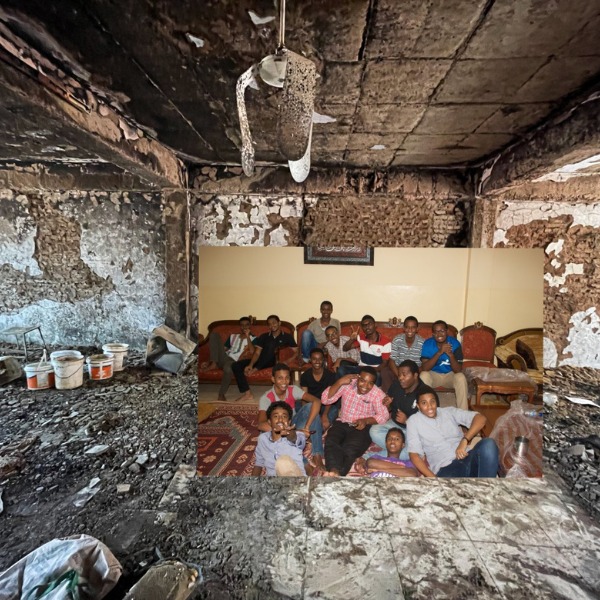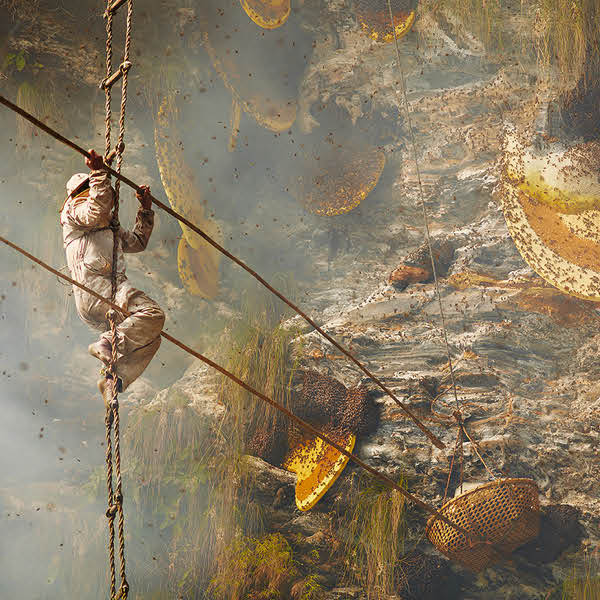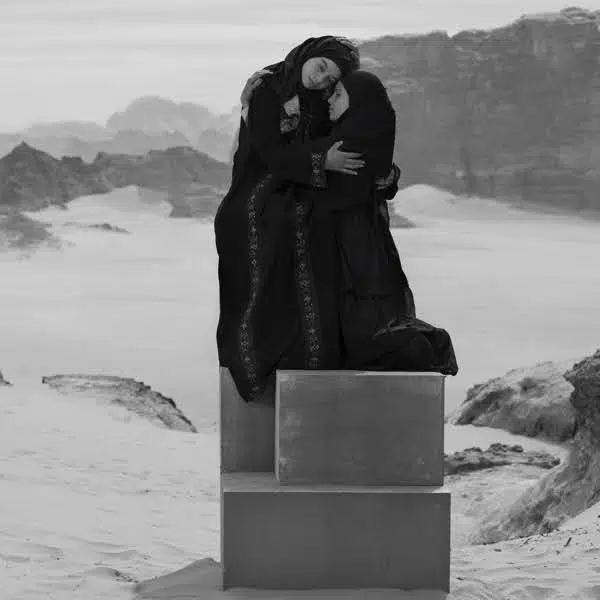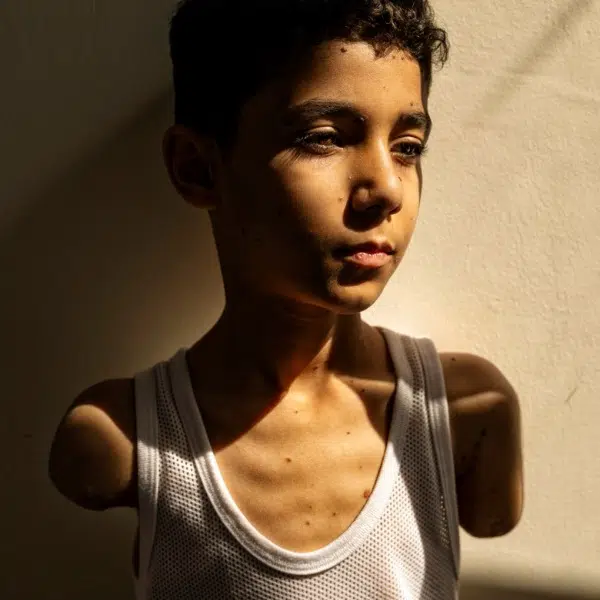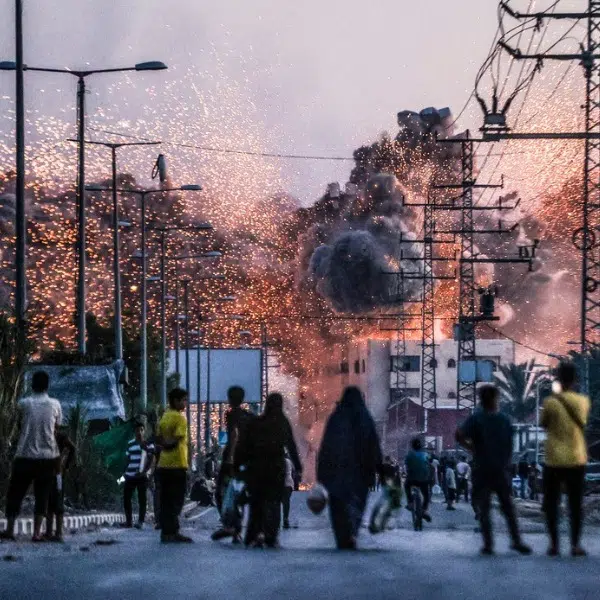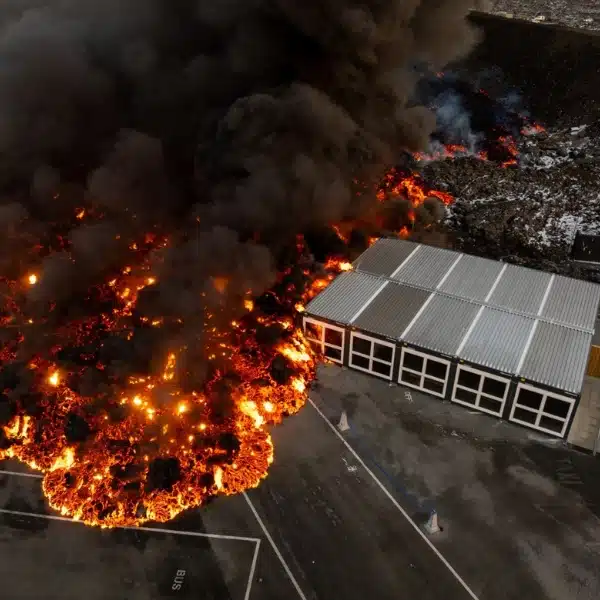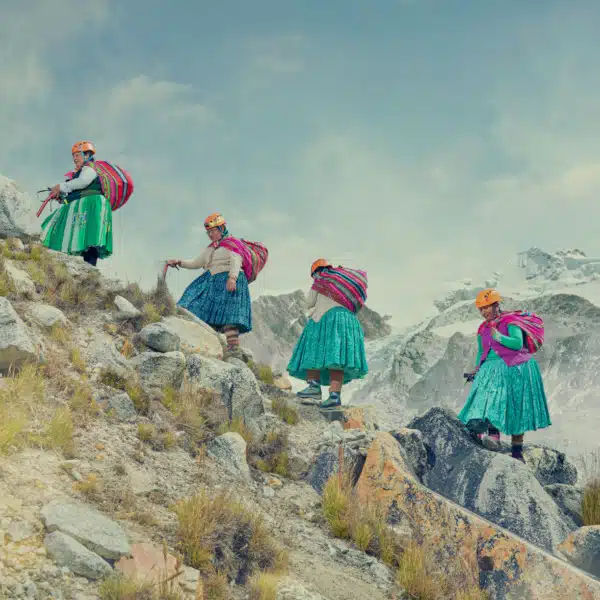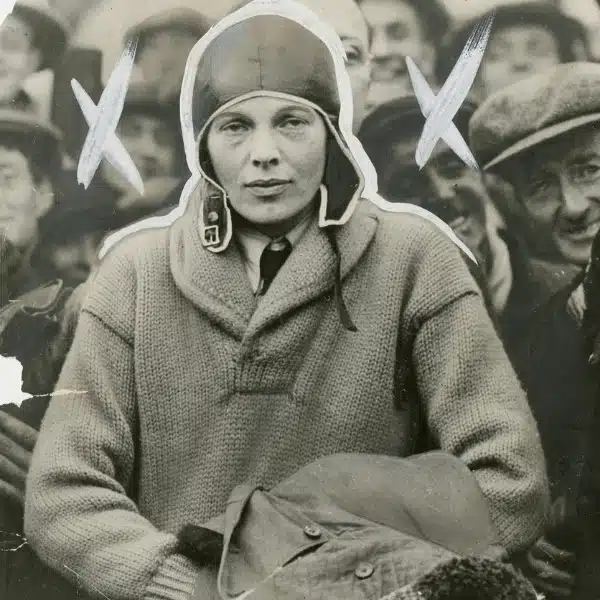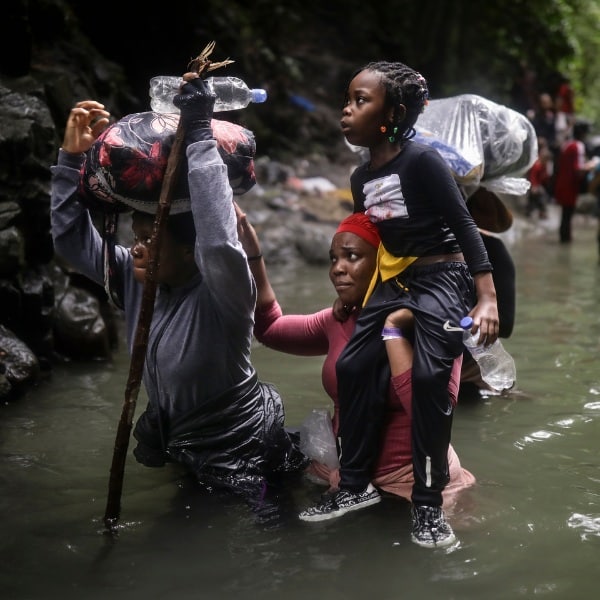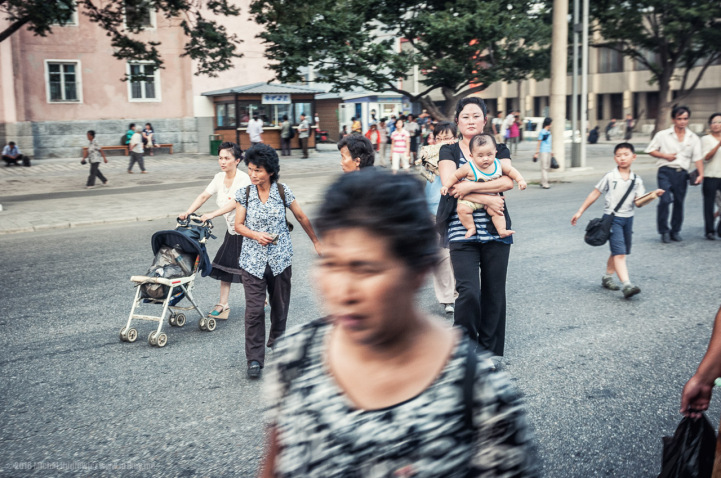
Earlier this year, London-based photographer Michal Huniewicz traveled to one of the most curious countries in the world–North Korea. He was accompanied by a small tour group and two guides who took them around the capital city of Pyongyang. As you might expect, this trip was not an easy one to make. Among numerous restrictions, photography is generally illegal (except in certain areas), but Huniewicz decided to take his camera anyways. His tour guides told him he'd likely have the pictures taken away, but Huniewicz was miraculously able to leave the country with all of his photos in tow.
The incredible series provides some insight into a land and culture that's cut off from the rest of the world. Huniewicz captures Pyongyang's sweeping architecture and monuments, as well as its citizens' everyday lives–namely, their day-to-day existence with constant military presence. He notes that they spent a long time in the “good” parts of the city, while they simply passed through the less ideal areas. Thanks to Huniewicz's craftiness, he was able to photograph both.
Huniewicz has shared a plethora of photos from his trip on his website. We've included some of our favorites–with his original captions–below.
Above: You have to be fast. Soon we noticed that while Pyongyang is meant to be a utopian showcase for foreign visitors like ourselves, there are more glamorous bits, and there are less glamorous bits. What's more, our mute driver was perfectly aware of this, so he would conveniently slow down whenever the surroundings were impressive, and speed up whenever they were less pleasant, to make them more difficult to photograph.
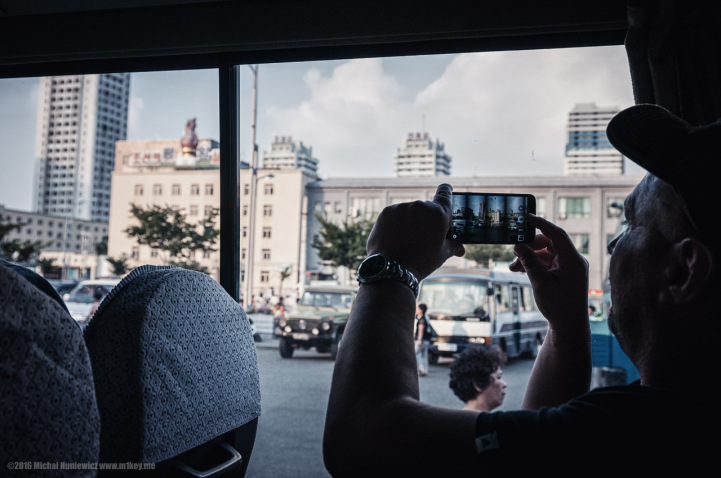
They didn't let us walk anywhere – within maybe a minute or two from leaving the train we were all squeezed into a minivan that would be our second home for the entire stay. As you can see, it's now OK to take your smartphone with you, although there will be no reception and no wifi anywhere. Your phone will be thoroughly searched on your way out.
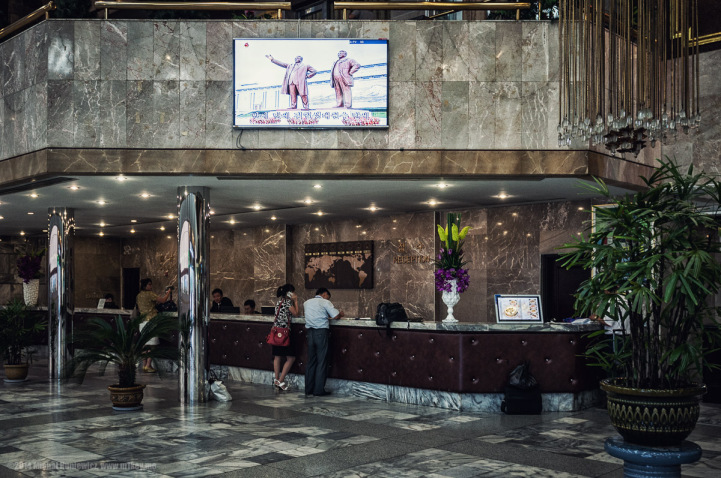
Meet our guides. We could not leave the hotel area without them. She was clearly the good cop, and even sang a song for us. He was the bad cop, and we reasoned he must have had some military authority, as soldiers would salute him upon inspecting his papers. His voice would tell us to go to sleep and wake us up with a morning call.
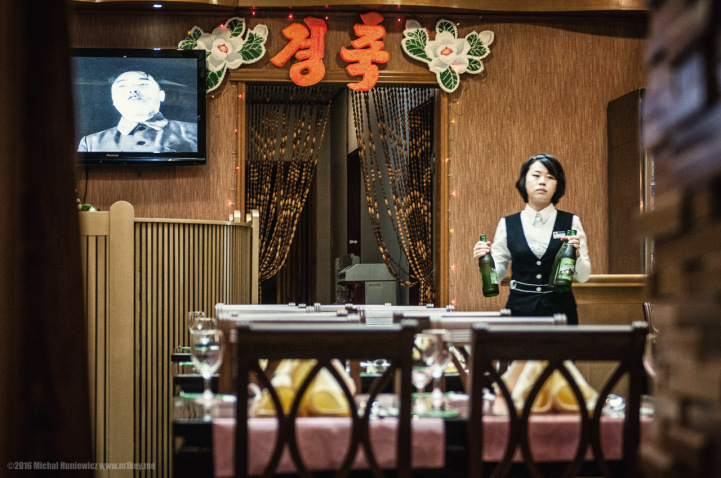
The waitresses serving us often seemed a little terrified. This was our first night in North Korea. We dined in the hotel's basement, in a small room, debating whether it was bugged, and wondering whether we could trust one another (the whole group was 7 people).
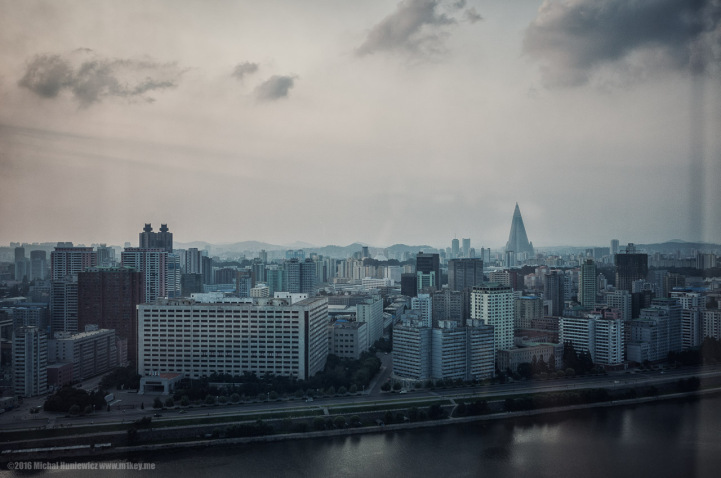
This is what Pyongyang looks like from the Yanggakdo Hotel. On the left, the Koryo hotel, supposedly on fire quite recently. This is where you will stay if you are Chinese – the Chinese are given a lot more freedom than anyone else. The hotel is in the city centre, and the tourists staying there can walk around the block on their own, and get away with crossing the streets (although it's officially not allowed). On the right, the Ryugyong, aka the Hotel of Doom. The 330 m tall buildigs stands largely empty, as North Korea doesn't have the funds to finish its construction (started in 1987).
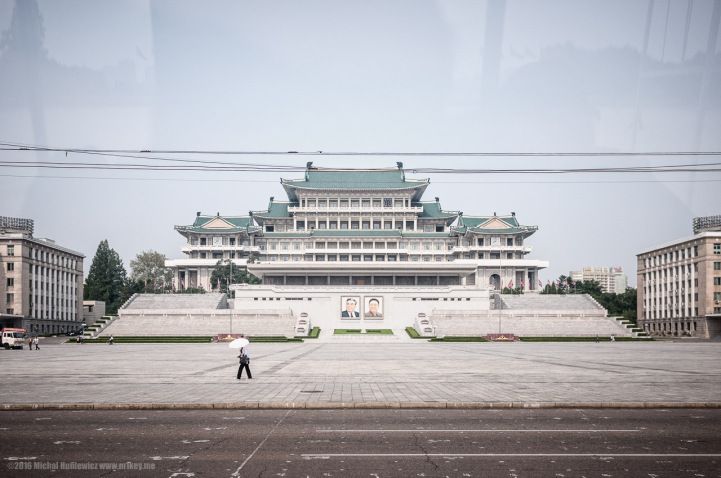
In the center of the capital – the Central District – at the Kim Il-sung Square, the Grand People's Study House stands big and proud, exactly in front of the Juche Tower on the other side of the Taedong River. The library inside that building has some foreign books, but one needs a permission to get them, because otherwise they would contaminate the North Korean minds with Western ideas. Also, did I mention that the official name of North Korea is Democratic People's Republic of Korea? Where once Marx and Lenin were displayed, now the two–with all due respect–usual suspects are smiling at us with kindness.
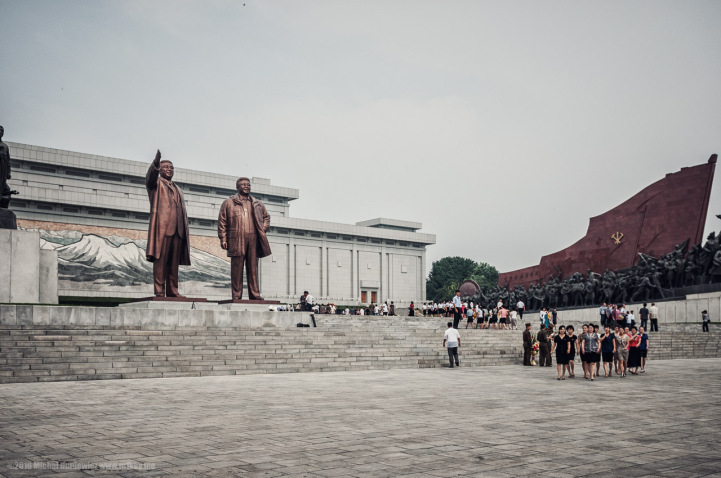
Here they are, the father significantly more elegant than the son, who, unlike in real life, isn't wearing shoes with heels. Initially, he was wearing a coat too, but they replaced it with the parka.
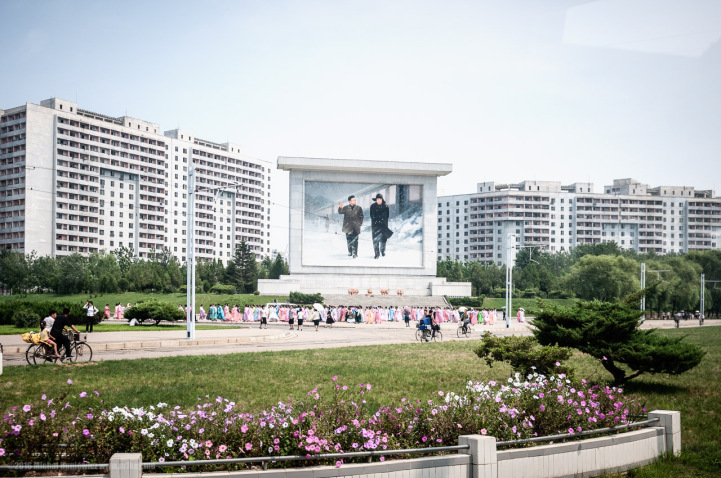
They took us to this spot over and over again, maybe they were really proud of the mural.
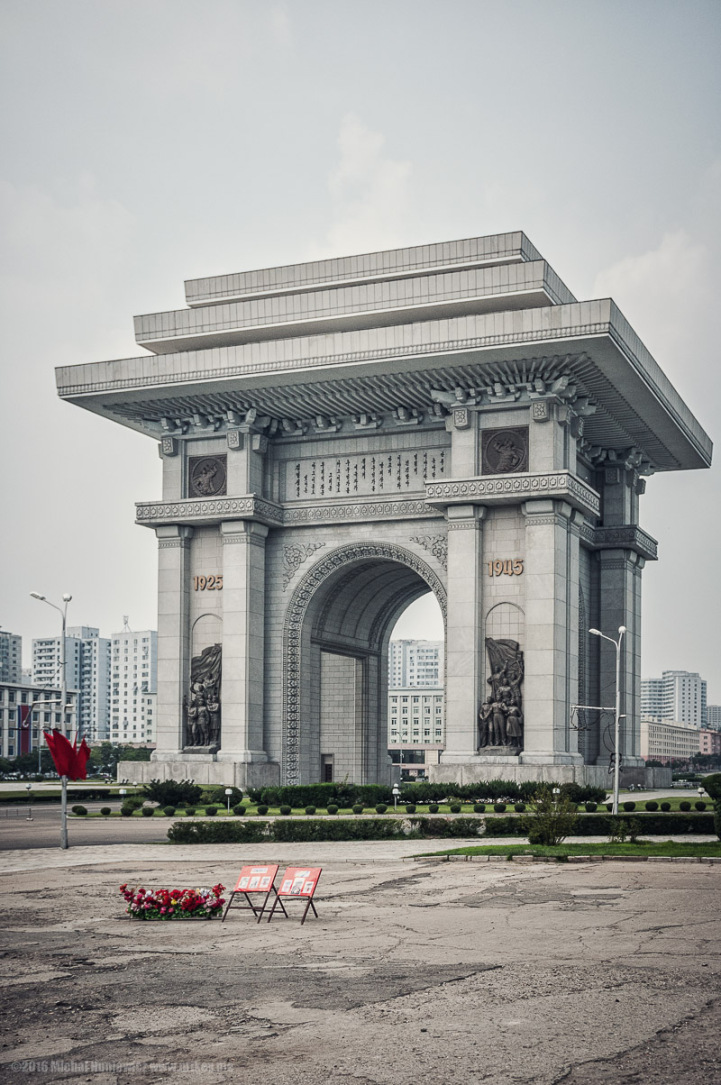
Built to commemorate the Korean resistance to Japan from 1925 to 1945, this is the second tallest triumphal arch in the world. The first tallest one is in Mexico.
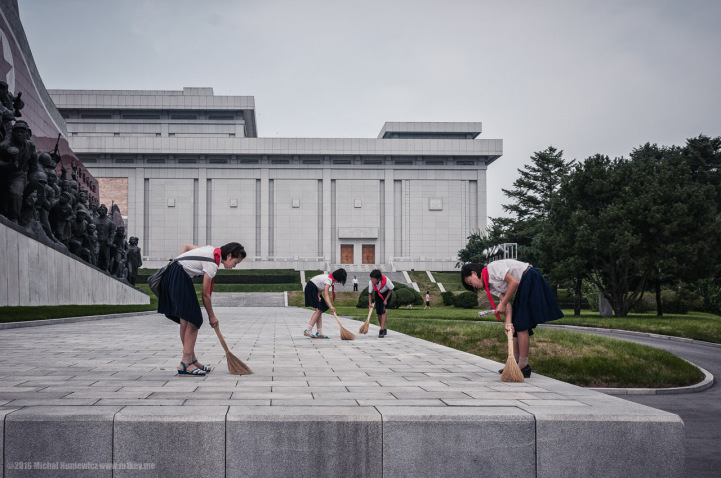
What's the last time you saw a kid in the West cleaning anything? Also, the statue on the left features a North Korean soldier stepping on an American flag.
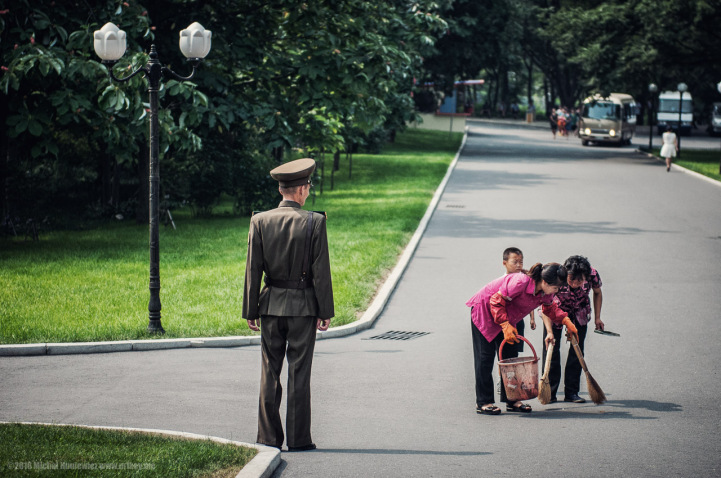
But then it doesn't seem like they volunteer to keep the place clean. Since South Korea is no longer providing fertiliser, North Koreans are charged with collecting their faeces in winter for spring planting. This is used to produce toibee, a fertilizer in which ash is mixed with human excrement. Factories and public enterprised have been ordered to produce two tons of toibee.
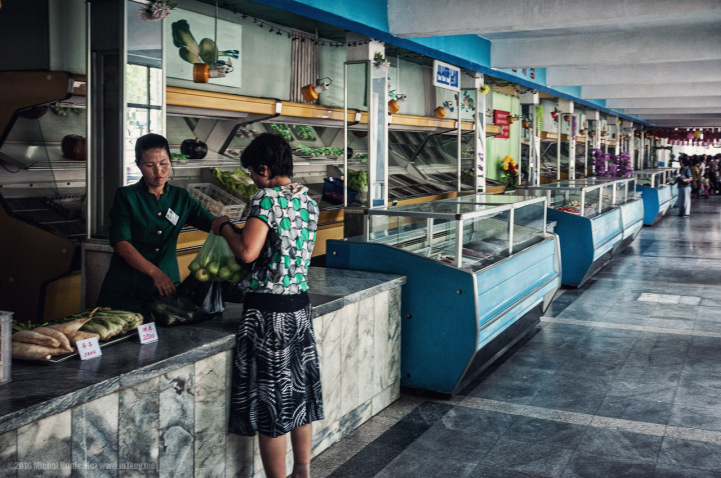
In North Korea, there are places you can visit and places you cannot visit, and the latter are far more numerous. Well, this is one of them. Usually, we were accompanied by our guides, one in the front, one in the back. But at one point they were both in the front, which allowed for a literally 15-second long detour into this ordinary shop for North Koreans. That gave me maybe 10 seconds to take this and the following picture, before being kicked out by the bad cop, and the atmosphere became rather unpleasant. I'm not sure if he saw me taking these pictures.
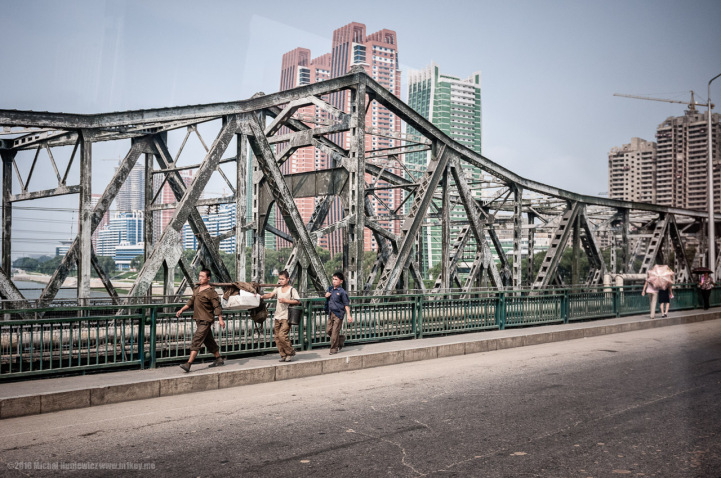
The city center sports also these colorful skyscrapers, unlike any other buildings I've seen. Various bits of infrastructure, like the bridge, look seriously neglected though.
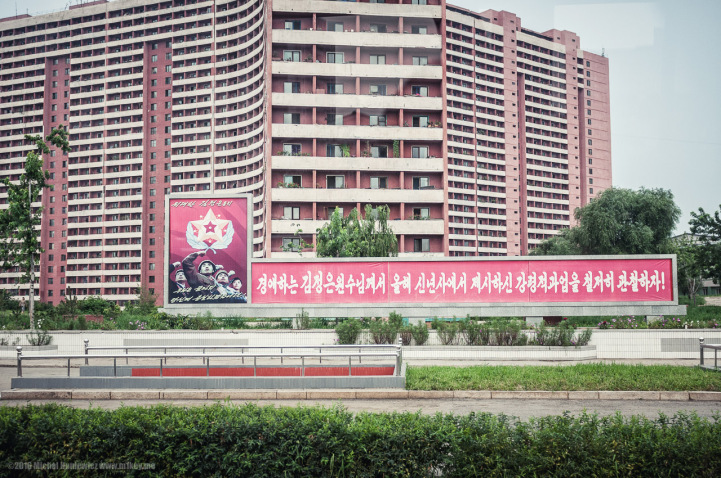
Blocks of flats in Pyongyang.
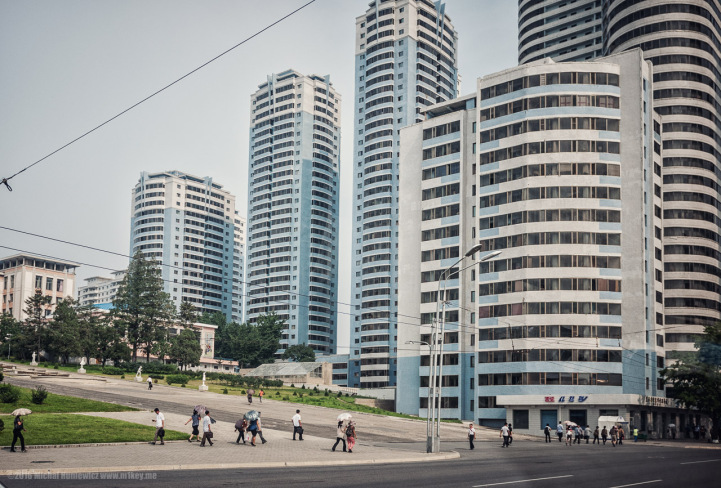
I think they were really proud of this area, as they were taking us there constantly.











































































